This is the fifth post in our Sea Slug of the Month series by guest author, Robin Agarwal.
A Sea Slug by Any Other Name: One Grossly Derivative Title Covering Three Random Thoughts About Scented Sea Slugs, Hopkins’s Rose, and the Ongoing Bother About Names
“that which we call a rose
By any other name would smell as sweet”
—Juliet in Romeo & Juliet, William Shakespeare
Although she was not particularly noted for her tidepool explorations, Juliet may have been surprised to discover that three of the nudibranchs (shell-less marine molluscs) living along the Central California Coast actually emit scents bizarrely familiar to humans. And no, they don’t smell like rotting tomatoes or dead fish — we are talking about really pleasant scents here.
Scented slugs
Melibe leonina, or Lion’s Mane Nudibranch
Would you believe that the fabulously extravagant Melibe leonina (Lion’s Mane or Hooded Nudibranch) smells exactly like a watermelon-flavored Jolly Rancher? Yes, that unmistakable fake watermelon smell that is used in the candy is perceived by our noses in the same way we react to a good sniff of this particular type of sea slug. Nudibranch researcher Sandra Millen describes them memorably in her October 2000 post to Sea Slug Forum: “It has a sweet fruity aroma which you can smell throughout the room when a number of them are in a tank. It tends to ‘get to you’ like a bad perfume. They are gregarious animals and probably use it to keep together.” The nudibranch’s smell comes from aldehydes (organic compounds used in many perfumes), which also occur naturally in strongly-scented plants such as cinnamon, cilantro, and vanilla.
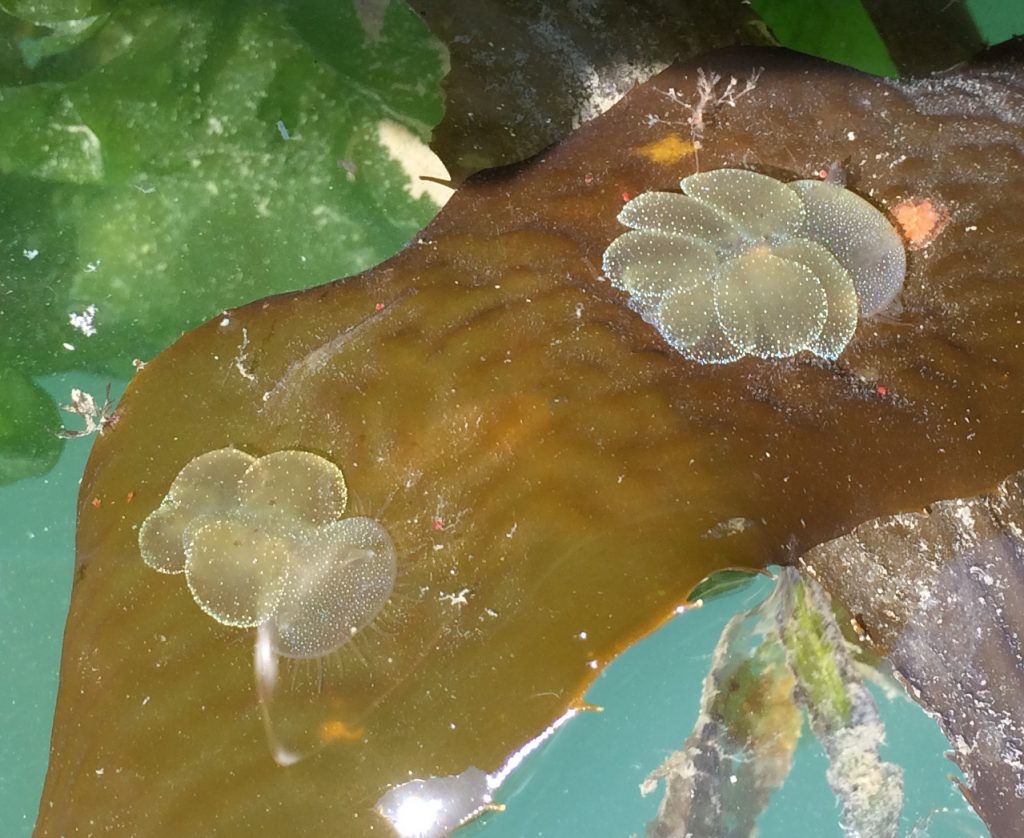
Acanthodoris lutea and Peltodoris nobilis, or Sea Lemon
Two other nudibranchs are purported to smell like citrus. Having tested this theory very unscientifically in my own meanderings, I can report that the orange, bunny-like Acanthodoris lutea smells a bit more like cedar than citrus. Still pleasant, but not as citrus-y as its giant yellow cousin, Peltodoris nobilis, one of several species who are aptly called Sea Lemons. P. nobilis is the only Sea Lemon I’ve noticed has any smell, but then again, sniffing slugs is not a regular thing for me. And for the scientifically curious, there are no odd effects….
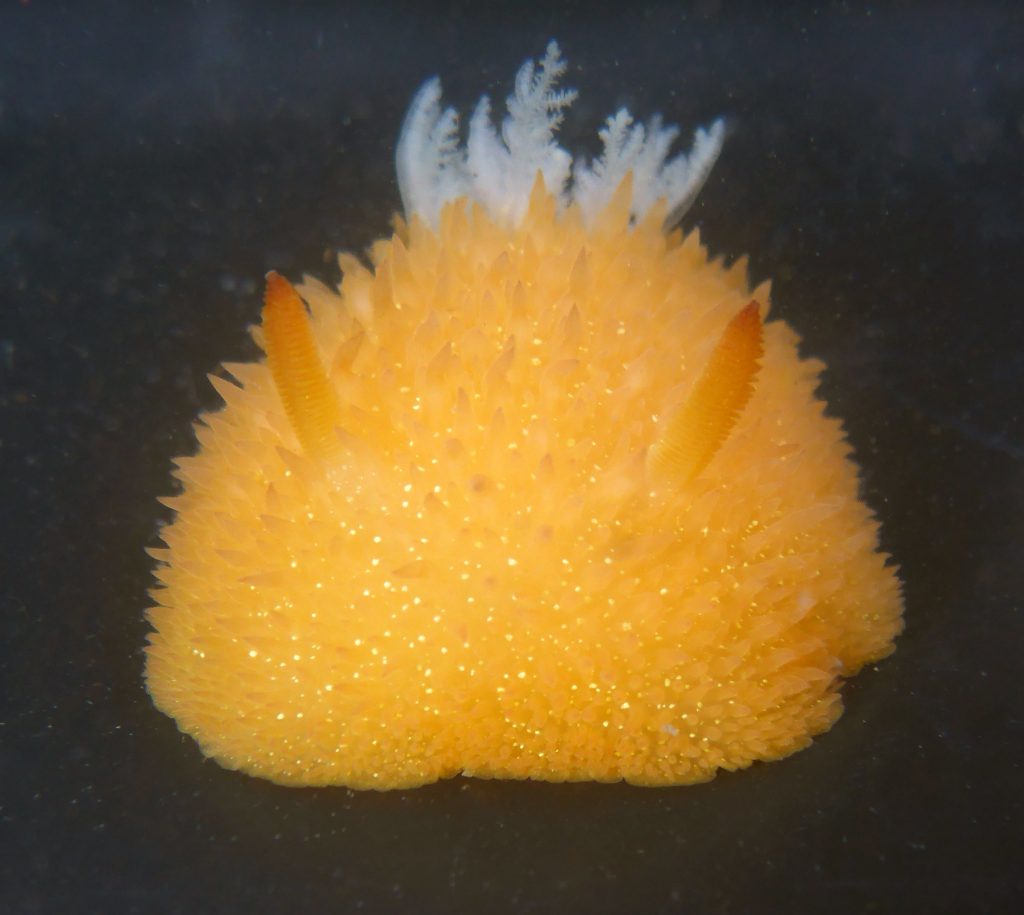
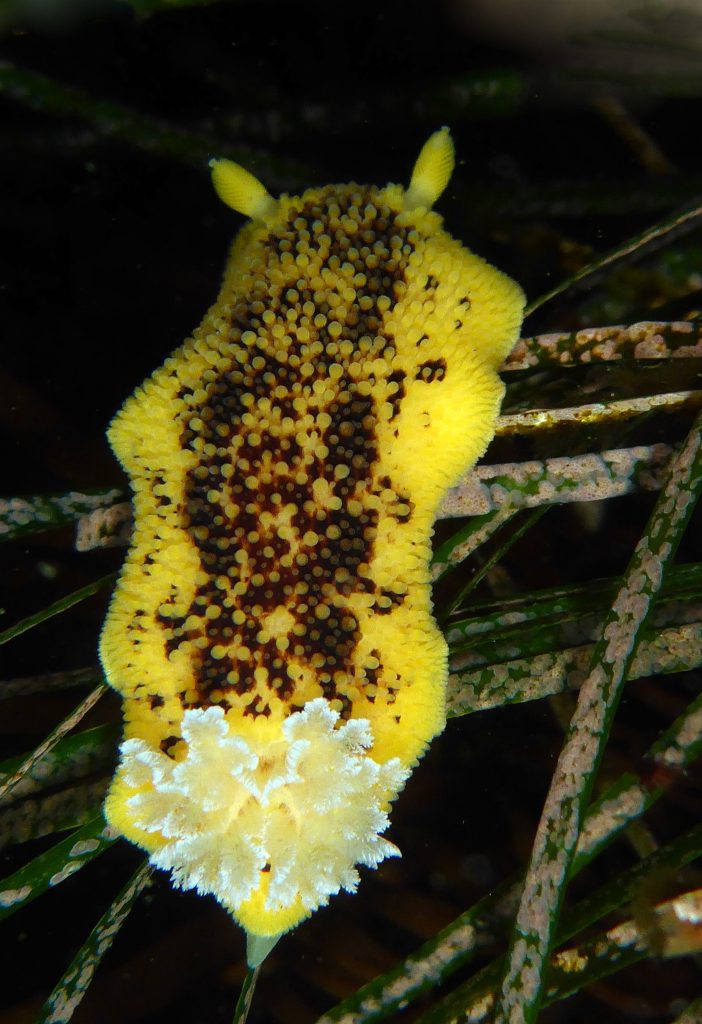
Okenia rosacea, or Hopkins’s Rose
Despite its name, the Hopkins’s Rose nudibranch (Okenia rosacea) does not have a scent. The common name of this vivid pink, wildly improbable-looking nudibranch comes from its original scientific name, Hopkensia rosacea (MacFarland 1905), named after Timothy Hopkins, an early supporter of Stanford University whose colorful personal history is beyond the scope of this blog but well worth a read. In 2004, Dr. Terry Gosliner, Senior Curator of the California Academy of Science’s Invertebrate Zoology & Geology department and a leading researcher in nudibranch evolution, synonymised Hopkensia with Okenia (1) based on their anatomical and genetic similarities.
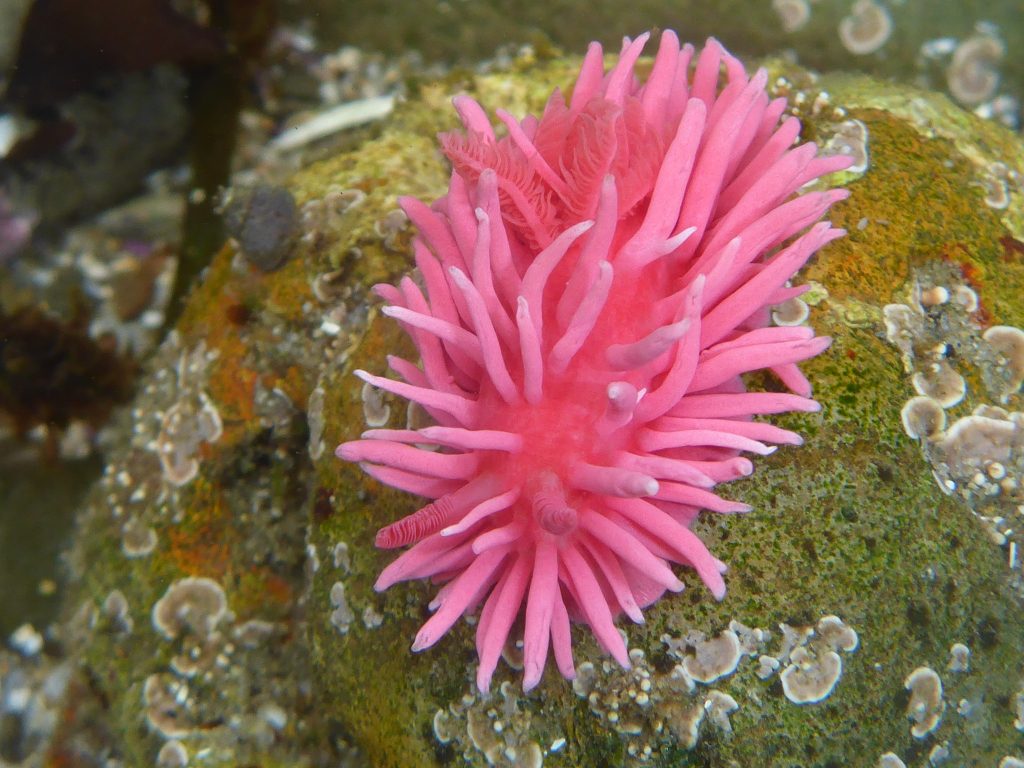
“Though there be madness, yet there is method in’t” (2): Discoveries in evolutionary biology are behind some nudibranchs’ name changes
Musing about recent scientific name changes in the nudibranch research world is a nuanced business, one which I have touched on a few times in previous Estuary Program blog posts. However, it is those nuances which lead researchers to greater accuracy and understanding, particularly in light of new laboratory tools at their disposal.
“I’m interested in the evolutionary history of Flabellina species on the West Coast,” says Brenna Green, an evolutionary biologist working with Dr. Gosliner. “I’m curious how they are related to each other, and how the diversity of species here came about. I use differences in DNA to uncover these relationships; traditionally, this sort of study was done by studying anatomical differences between species. However, the idea behind both methods is the same: the fewer differences between a pair of species, the more closely related to each other they are likely to be. However, sometimes in studying the DNA you find evidence for a very different picture of the evolutionary history than what was previously accepted.”
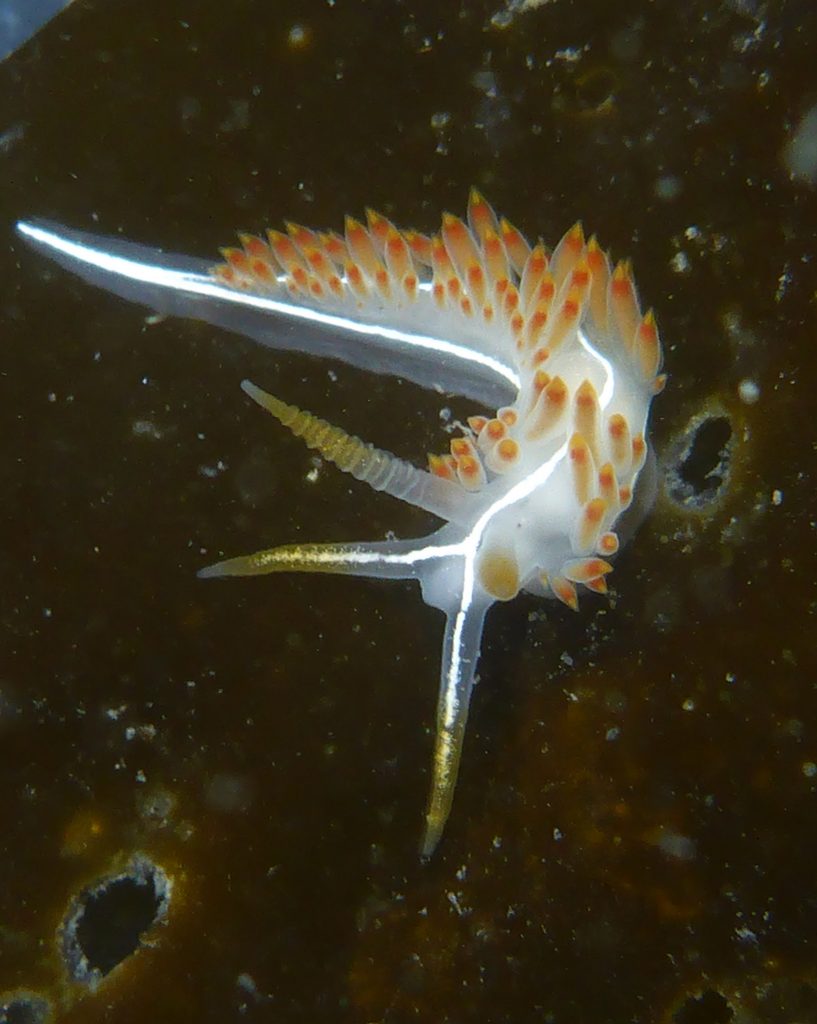
Green goes on to point out that scientific names, besides providing a name to call a species, also serve to represent the species’ evolutionary history. “Species that share a genus name should be each others’ closest relatives. To some degree, how to decide boundaries between genera is arbitrary; a genus is not a “natural” group, but rather something a [human] scientist defines. Two scientists looking at the same evolutionary tree based on the same data may group species within genera in very different ways, depending on how significant they understand the differences between species to be. Add in the wealth of new genetic data available, and scientific names are going through a lot of changes right now.”
There is some irony in the fact that as nudibranchs’ scientific names evolve, their common names — dismissed by some members of the research community as frivolous and annoyingly inaccurate for a variety of good reasons — remain consistent. Common names also are receiving more attention for their ability to engage the public, and as citizen science grows, they continue to be a “first glimpse” for many people into the differences between the nudibranchs of California’s Central Coast.
Footnotes
- Gosliner, T. M. (2004) Phylogenetic Systematics of Okenia, Sakishimaia, Hopkinsiella and Hopkinsia (Nudibranchia: Goniodorididae) with descriptions of new species from the tropical Indo-Pacific. Proceedings of the California Academy of Sciences, 55: 125-161
- Shakespeare, William. Hamlet. Act 2, Scene 2. Spoken by Polonius.
Guest Author, Robin Agarwal
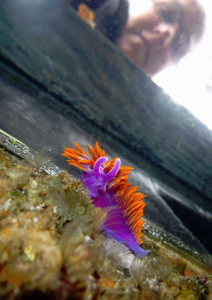
Lying flat on a bouncing floating dock underneath one of the biggest tourist-attraction piers in California, with my head and arms hanging over the side, I am frequently reminded of the kindness of fellow humans who think I’ve had a stroke or dropped my phone. No—just photographing sea slugs! I point, and show them a few photos on the back of my cheap underwater macro camera, and presto, another nudibranch enthusiast.
I was a tidepool kid who went astray and graduated with a liberal arts degree. In the last decade, I’ve returned to the tidepools and found a particular passion for photographing nudibranchs and other intertidal marine life. I’m co-editor of the California Sea Slugs Guide, and the Dock Fouling in California project on iNaturalist.org, where I have posted about 4,000 geotagged observations of nudibranchs, mostly along the Central California coast. Since I offer all my photos free to non-profit organizations (my way of thanking them for the work they do), you can find them all over the internet as well as Bay Nature magazine and NOAA National Marine Sanctuary informational signage. I’ve also been an enthusiastic contributor to a few scientific papers on nudibranchs, most recently Heterobranch Sea Slug Range Shifts in the Northeast Pacific Ocean Associated with the 2015-16 El Nino by Goddard et al. (2018).
Subscribe to our weekly blog to have posts like this delivered to your inbox each week.
Help us protect and restore the Morro Bay estuary!
- Donate to the Estuary Program today and support our work in the field, the lab, and beyond.
The Estuary Program is a 501(c)3 nonprofit. We depend on funding from grants and generous donors to continue our work. - Support us by purchasing estuary-themed gear from ESTERO. This locally owned and operated company donates 20% of proceeds from its Estuary clothing line and 100% of Estuary decal proceeds to the Estuary Program. Thank you, ESTERO!
- Purchase items from the the Estuary Program’s store on Zazzle. Zazzle prints and ships your items, and the Estuary Program receives 10% of the proceeds. Choose from mugs, hats, t-shirts, and even fanny packs (they’re back!) with our fun Estuary Octopus design, our classic Estuary Program logo, or our Mutts for the Bay logo.